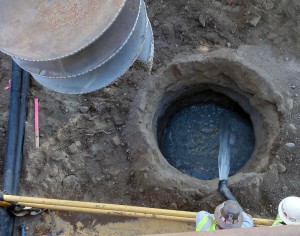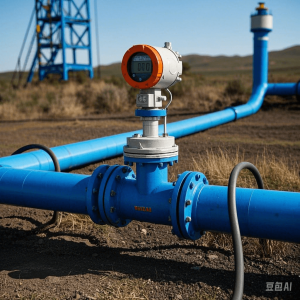It's necessary to run casing down hole and perform cementing operations when you drill to a certain depth. Casing will be installed for creating an annular barrier. Then cement slurry will be pumped down by the driller; then cement slurry travel up and fill the annulus to a preset top of cement (TOC). In the special cement operation, liquid cement slurry generates a hydrostatic pressure when it circulates down the casing and up the small annulus, which causes high friction pressure and raise the bottom hole pressure.
In case the hole pressure exceeds normal level, it will fracture the formation and trigger a well-control incident. Then cement slurry enters into the formation. On the contrary, insufficient down hole pressure is not enough to hold back formation pressure. In view of such reason, it's important to utilize the appropriate slurry density and weight for pressures at certain depth, introducing real-time cement slurry density meter to reach expected precision.

Recommended Slurry Density Meter & Installation
High-precision and stable non-nuclear ultrasonic density meter is an ideal option for real-time density monitoring. The cement slurry density is determined by transmission time from transmitter to receiver, getting rid of interference from slurry viscosity, size of particles and temperature.
The non-nuclear density meter online is suggested to install near the well injection point of pipelines, guaranteeing the obtained readings same to slurry about-to-enter the well. At the same time, sufficient straight pipelines in both the upstream and downstream of the ultrasonic density meter minimizes influences of fluid flow conditions.

Convenience Brought by Inline Density Meters
Readings of cement slurry density could be collected and displayed in real time if it was integrated into an automation control system. Operators are allowed to observe density fluctuation curves, current density values and deviations from the preset density target in the central control room.
The control system adjusts the slurry density automatically after receiving an alarm signal, based on preset programs. In other words, the feedback control mechanism works to increase the injection of water or additives. On the contrary, the proportion of cement will be raised in case the density is too low.
Advantages of the New Ultrasonic Density Meter
The non-nuclear density meter measures real-time density of cement slurry by the ultrasonic sound, free from limitations from environmental departments. It is independent of froths or bubbles in slurry. Besides, operational pressure, fluid abrasion and corrosion will not influence precision of final outputs. Last but not least, low cost and long lifespan make it popular among many inline density meters like tuning fork density meter, Coriolis density meter and the like.
Post time: Jan-02-2025





